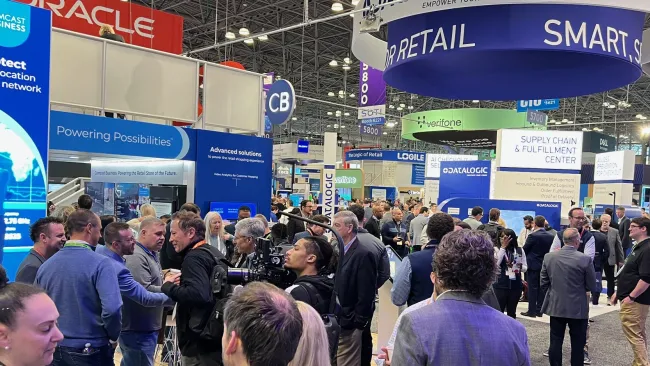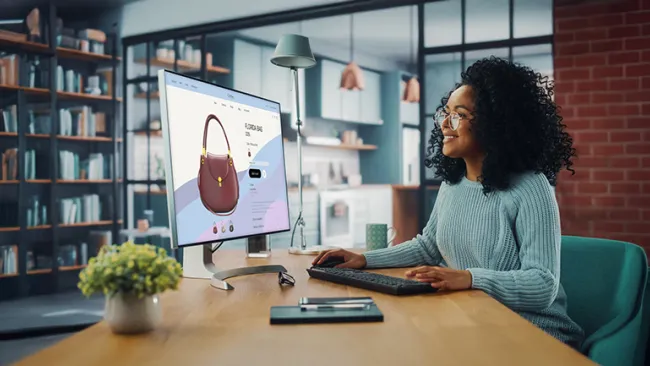The need for retailers to find new ways of enticing shoppers is not news, but the sense that retailers are under more pressure than ever was a major theme at the National Retail Federation’s annual Big Show.
Several large retail brands kicked off 2017 with announcements that they were laying off employees or closing altogether. Squeezed by online competitors and evolving customer tastes, Macy’s, Sears, The Limited, and American Apparel have said they will be closing some or all of their stores.
At the same time, Amazon is opening bookstores in New York City, Chicago, Boston, and other cities. What have traditional retailers gotten wrong and what is different about the approach of e-commerce giants like Amazon?
A notable difference is access to data insights. “Retailers have a lot of great data about the online shopper—which items did they look at, how much time did they spend on a page, what’s in their shopping cart,” notes Michelle Tinsley, mobility and payment security director at Intel. “But brick-and-mortar stores don’t have that same data trail.”
Intel is one of the technology providers that is attempting to solve that issue for retailers. The company showcased its Responsive Retail Platform at the NRF Big Show. Using sensors that track RFID-tagged clothing, the platform collects information about the merchandise and customer behavior and sends alerts to employees in real time.
For instance, a retailer will know if a customer brings a pair of jeans into the dressing room but doesn’t ultimately purchase it. And the retailer can set a rule to be alerted if multiple customers try on that particular item and fail to buy it. A store manager may then receive a message to inspect the jeans for damage. Similarly, the platform can inform employees when a particular size needs to be restocked, speeding up replenishment and providing inventory accuracy.
Levi Strauss is testing the retail solution’s ability to monitor inventory and issue alerts if merchandise is left in the dressing room or if jeans need to be restocked. The system also maps in-store traffic so that the company can determine which products are selling.
Intel also enables store owners to examine simulated store aisles using a virtual reality tool that layers sales data and other data points over the images in a heat map to quickly identify trends and optimize merchandise displays.
Zebra Technologies, which acquired Motorola’s tracking technology three years ago, is offering its own data insights solution. Zebra SmartSense for Retail aggregates data from a sensor grid that tracks in-store video, mobile device signals, and RFID-tagged merchandise to help retailers understand where customers are moving in their stores, which aisles they’re lingering in, and what they’re placing in their shopping carts.
And if the customer who is lingering in front of an item identifies themselves in the store, such as by using the retailer’s loyalty app, the employee could receive an alert that the customer has already shown interest in the product and shape the conversation around that knowledge. In other words, it’s “delivering the same level of data in stores as what’s online,” says Rob Armstrong, senior director of Americas marketing at Zebra Technologies.
Armstrong declined to name the clients who are testing the technology, but noted several brands have requested briefings about it at the show.
Ratnakar Lavu, Kohl’s CTO, noted in an on-stage discussion that “technology is going to transform a lot of companies [but] “transformation takes time.” Companies must ensure that the changes meet customer needs and have the support of the entire organization, he added.
The question, though, is whether retailers can move fast enough to keep up with customer expectations and competitors. Case in point: Amazon is experimenting with a retail concept in which customers log in upon entering a store and sensors detect when products are taken off a shelf. Customers are charged when they exit the store with the item, eliminating the traditional checkout process.
When asked whether Kohl’s has the resources to match that type of experience, Lavu demurred, noting that it’s not a question of matching the technology, but determining what their customers want. It’s hard to imagine customers demanding that they stand on long checkout lines.
Like this post? Subscribe to our customer experience blog.
Also, check out the most recent issue of our monthly customer experience eNewsletter, Dialogue.
Retail’s Hail Mary: Why Retailers are Betting on In-Store Data Insights


















